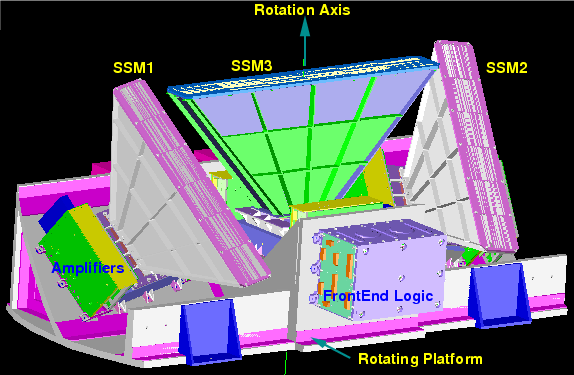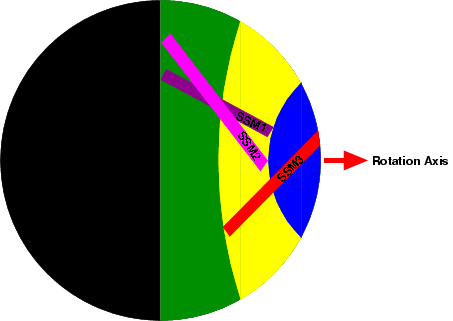ASTROSAT Scanning Sky Monitor (SSM):
The Scanning Sky Monitor will consist of three position sensitive
proportional counters, each with a
one dimensional coded mask,
very similar in design to the
All Sky Monitor
on NASA's
RXTE satellite.
The gas-filled proportional counter will have resistive
wires as anodes. The ratio of the output charge on either ends of
the wire will provide the position of the x-ray interaction,
providing an imaging plane at the detector. The coded mask,
consisting of a series of slits, will cast a shadow on the detector,
from which the sky brightness distribution will be derived.
The main characteristics of an SSM camera is summarized below:
| Detector |
: |
Proportional counters with resistive anodes;
Ratio of signals on either ends of anode gives position.
|
| Energy Range |
: |
2 - 10 keV |
| Position resolution |
: |
1.5 mm |
| Field of View |
: |
10o x 90o (FWHM) |
| Sensitivity |
: |
30 mCrab (5 min integration) |
| Best time resolution |
: |
1 ms |
| Angular resolution |
: |
~ 10 arc min |
The monitors will have to continuously scan the sky irrespective
of the functions of the other instruments on the satellite.
A mounting arrangement is therefore necessary to enable these
detectors to scan as much of the sky as possible, independent of
the satellite pointing.
 |
All three counters will be mounted
on a rotating platform which will have stepped rotation at
discrete steps about one axis. One of the monitors
(the Boom camera: SSM3) will be aligned with the rotation axis
while the other two will be mounted with their field of view
forming an 'X' in the sky (see figure at left). |
Typical scan pointings will be ~10 degrees apart with ~10 min
integration at each location. This enables nearly half sky
coverage, about 4 times per day
(including nominal SAA exclusion orbits).
|
The sky coverage achieved by rotating the 3 SSM detectors is shown
in the figure on the right.
The region in blue marks that covered by SSM3 alone.
The green region is covered by both SSM1 and SSM2, and the
yellow region is covered by all three cameras.
The three bars show the individual
fields of view of the three cameras at a given snapshot.
|
 |



















